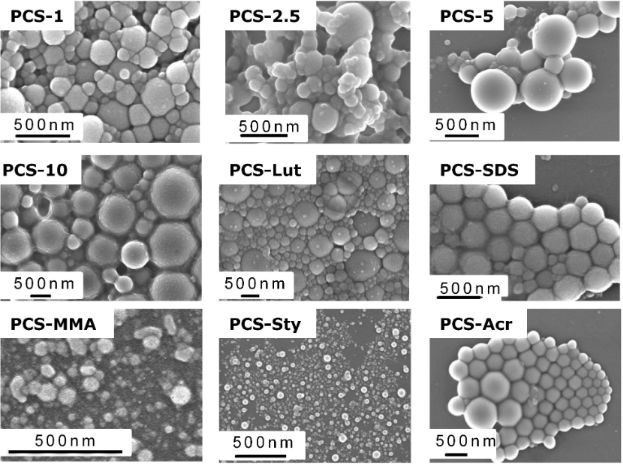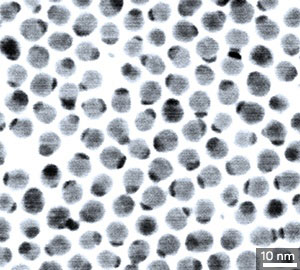

- Silicon zinc sulfide core shell nanocrystals how to#
- Silicon zinc sulfide core shell nanocrystals full#
- Silicon zinc sulfide core shell nanocrystals series#
The photoluminescence (PL) of PSi is generally very broad, with full width at half maximum (FWHM) of 120–200 nm, often explained by size distribution with quantum confinement as well as defect state emission. Some degree of control of the micro-sized particles was achieved.

Some particularly important characteristics of such SiNCs include absolute quantum yield (AQY), stability, luminescence lifetime, surface chemistry, and synthesis route.Īnodization of Si wafers in hydrofluoric acid, leads to porous silicon (PSi) layers, which can then be milled to produce a powder of micrometer-sized flakes of nanostructures.

Luminescent Si nanocrystals (SiNCs) are intensively studied for their potential applications in diverse fields, such as optoelectronics, sensing, and medicine. This oxidation process allows for the growth of very good quality oxide with low defect concentration and low stress, resulting in very good surface passivation, which explains the very high quantum yields obtained. Then, a thin oxide shell (~1 nm) was grown using high-pressure water vapor annealing. The SiNCs were first fabricated by non-thermal plasma synthesis or anodization in the case of porous silicon. The lifetime at 1.5 eV was over 232 μs, the longest ever reported for SiNCs, consistent with the very high luminescence efficiency. The SiNCs were very stable under continuous excitation for several hours. The same method led to quantum yields of ~30% for porous silicon powder emitting at 1.9 eV. Here, we report a method of obtaining Si/SiO 2 core/shell nanoparticles emitting at a peak energy of 1.5 eV with very high quantum yields (53–61%). Most of the highly efficient luminescent silicon nanocrystals (SiNCs) reported to date consist of organically capped silicon cores.

Silicon zinc sulfide core shell nanocrystals how to#
Read more about how to correctly acknowledge RSC content.Bernard Gelloz 1 *, Firman Bagja Juangsa 2, Tomohiro Nozaki 2, Koji Asaka 1, Nobuyoshi Koshida 3 and Lianhua Jin 4 Permission is not required) please go to the Copyright If you want to reproduce the wholeĪrticle in a third-party commercial publication (excluding your thesis/dissertation for which If you are the author of this article, you do not need to request permission to reproduce figuresĪnd diagrams provided correct acknowledgement is given. Provided correct acknowledgement is given. If you are an author contributing to an RSC publication, you do not need to request permission Please go to the Copyright Clearance Center request page. To request permission to reproduce material from this article in a commercial publication, Provided that the correct acknowledgement is given and it is not used for commercial purposes. This article in other publications, without requesting further permission from the RSC, Rosenau,Ĭreative Commons Attribution-NonCommercial 3.0 Unported Licence. It also benefited for the co-dissolution of the polymers and chemical binding with other materials through the reactive silanol group, which provide stable and well-distributed ZCIS/ZnS QDs composites or surface coating by the QDs.įull-color-emitting (CuInS 2)ZnS-alloyed core/shell quantum dots with trimethoxysilyl end-capped ligands soluble in an ionic liquid Finally, the long-chain ligands dodecanethiol/octadecylamine on the quantum dots' surface were efficiently replaced by (3-mercaptopropyl)trimethoxysilane, thus enabling their solubility in an ionic liquid, which was confirmed via GC-MS. The ZnS shell was formed to improve the PL emission efficiency of the core nanoparticles and the PL emission wavelength of the resulting ZCIS/ZnS NCs gradually blue-shifted with an increase in the number of shell layers, resulting in a wide range of emissions from 800 nm to 518 nm that can be tuned by the core compositions or shell layer numbers for ZCIS/ZnS.
Silicon zinc sulfide core shell nanocrystals series#
Here, we fabricated a series of ZCIS QDs with tunable PL wavelengths and band-gap energies via a facile strategy by varying the ratio of A1–3 stock (Cu +/In 3+) to the B stock (Zn 2+) content. Zinc-copper-indium sulfide (ZCIS)-alloyed quantum dots are emerging as a new family of low toxic I–III–VI semiconductors due to their broad and color-tunable emissions as well as large Stokes shifts.


 0 kommentar(er)
0 kommentar(er)
